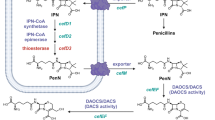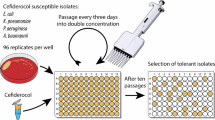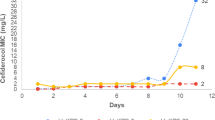Abstract
EXPERIMENTS in our laboratory have indicated that a new cephalosporin preparation, ‘Cephaloridine’ (CR), is capable of arresting the development of a trachoma agent at an early stage, when used in concentrations as low as 0.1 µg/ml, of culture medium. In the present communication, some findings on the effect of this antibiotic on the multiplication of vaccinia virus in cell culture will be described.
This is a preview of subscription content, access via your institution
Access options
Subscribe to this journal
Receive 51 print issues and online access
$199.00 per year
only $3.90 per issue
Buy this article
- Purchase on SpringerLink
- Instant access to full article PDF
Prices may be subject to local taxes which are calculated during checkout
Similar content being viewed by others
References
Fenner, F., Virology, 5, 502 (1958).
Nishmi, M., and Keller, R., Virology, 18, 109 (1962).
Nishmi, M., and, Keller, R., Nature, 193, 150 (1962).
Author information
Authors and Affiliations
Rights and permissions
About this article
Cite this article
NISHMI, M. Effect of ‘Cephaloridine’ on Vaccinia Virus in vitro. Nature 209, 222–223 (1966). https://doi.org/10.1038/209222a0
Issue date:
DOI: https://doi.org/10.1038/209222a0



